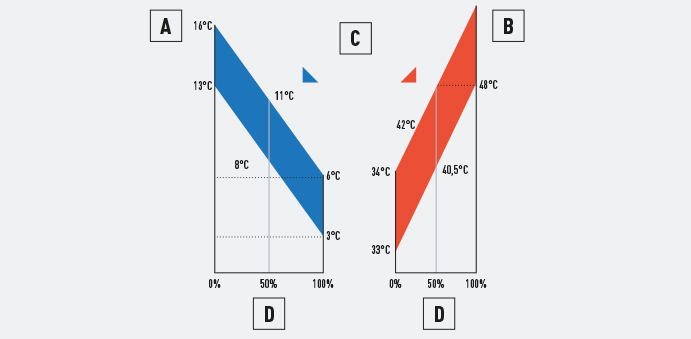Panasonic VRF TOP comfort
As a standard, from 2006 all Panasonic VRF systems include the special VET technology,
with variable coolant temperature.

Variable Evaporation and Condensation Temperature
Coolant evaporation temperature (°C)
Similarly, the condensation temperature is also variable and is adjusted to the room thermal load, within a range of 33–55 °C.
Coolant evaporation temperature (°C)

B. It adjusts to the room thermal load
C. Comfort
D. Thermal load
2. Constant ET
3. Variable CT
Example of cooling mode (heating mode is also available)

A
The evaporation temperature is kept
Maximum energy saving
B
Higher thermal loadThe evaporation temperature lowers, adjusting itself to the thermal load
Maximum comfort
C
Maximum thermal loadThe evaporation temperature lowers further
Maximum performance
2. Room thermal load
Technical focus Variable temperatures

B. Condensation temperature
C. Optimal working range for the compressor
D. Thermal load
Control of the discharge temperature
For example, in cooling mode, if the temperature of the discharged air was below 10 °C, the user may feel discomfort, just as he would do in heating mode if the temperature was far too high.
With the Panasonic control of the discharge air temperature, this can be adjusted within a cooling range of 7–22 °C.
A. Intake
B. Fan
C. Battery R410A
D. Discharge > Example of cooling > It can be set between 7 and 22 °C
E. Air thermistor IN
F. Cooling thermistor IN E1 / OUT E3
G. Air thermistor OUT











































